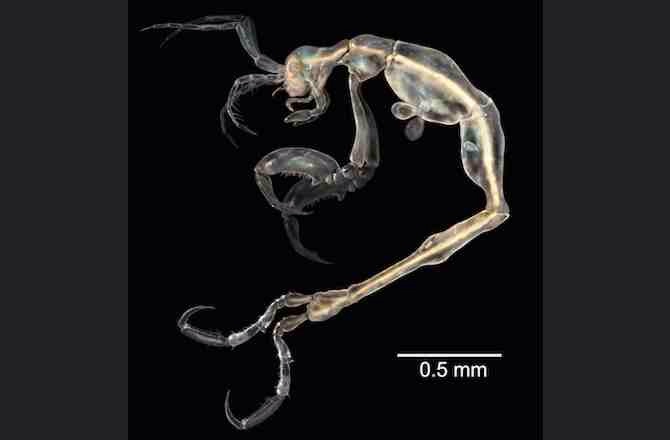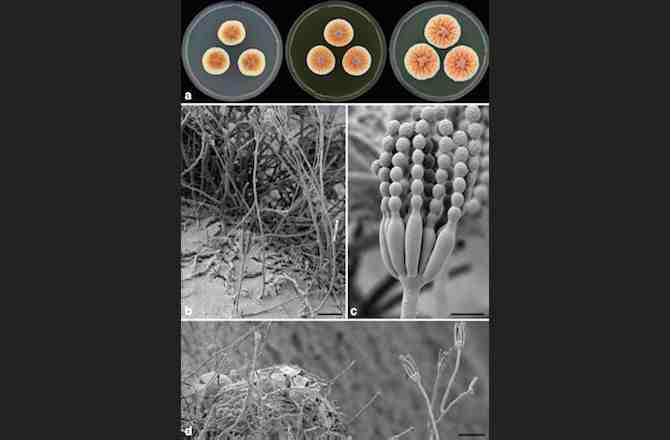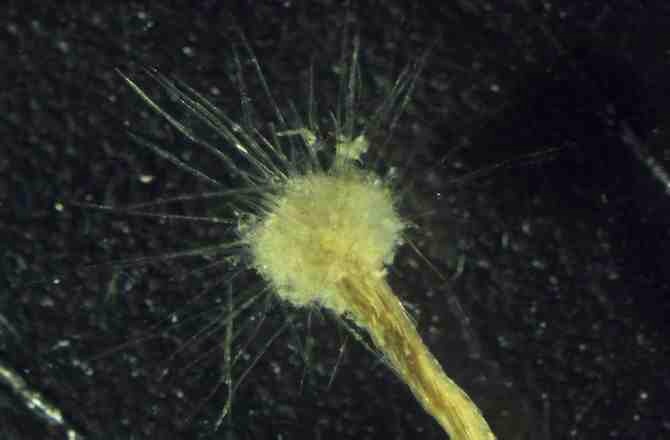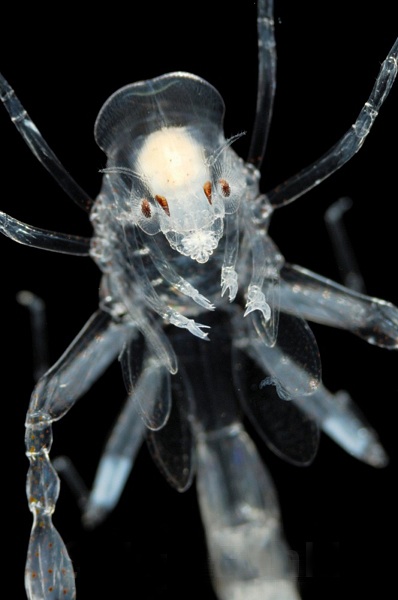It looks like you're using an Ad Blocker.
Please white-list or disable AboveTopSecret.com in your ad-blocking tool.
Thank you.
Some features of ATS will be disabled while you continue to use an ad-blocker.
15
share:
The top 10 new species for 2014 have just been named by an international committee of taxonomists and other experts. The 2014 list, put together by
the International Institute for Species Exploration at the SUNY College of Environmental Science and Forestry.
The announcement of the annual list that was established in 2008, coincides with the birthday of "the father of modern taxonomy" a 18th century Swedish botanist, Carolus Linnaeus.
"The top 10 is designed to bring attention to the unsung heroes [who are] addressing the biodiversity crisis by working to complete an inventory of Earth's plants, animals and microbes," Quentin Wheeler, the president of the college.
There were about 18,000 new species of animals, plants and microbes discovered in 2013. Here is the top ten list of those amazing new species discoveries:
Dragon Tree

Andrill Anemone

Skeleton Shrimp

Orange Penicillium

Saltuarius eximius (Gecko)

Spiculosiphon oceana

Tersicoccus Phoenici

Tinkerbell Fairyfly

Zospeum Tholussum: eyeless snail

Top Species of 2013
The Tinkerbell Fairyfly and the eyes less snail are adorable! The snail resembles ice. Thought others might enjoy this list so I'm passing it along.
The announcement of the annual list that was established in 2008, coincides with the birthday of "the father of modern taxonomy" a 18th century Swedish botanist, Carolus Linnaeus.
"The top 10 is designed to bring attention to the unsung heroes [who are] addressing the biodiversity crisis by working to complete an inventory of Earth's plants, animals and microbes," Quentin Wheeler, the president of the college.
There were about 18,000 new species of animals, plants and microbes discovered in 2013. Here is the top ten list of those amazing new species discoveries:
Dragon Tree

Sounding like something out of Game of Thrones and towering over the landscape, Kaweesak’s dragon tree (Dracaena kaweesakii) amazingly went unnoticed until recently.
"If we did not know such a beautiful kind of tree, standing 40 feet tall, what else do we not know about the flora and fauna of Thailand?" Wheeler said. "This dragon tree stands as a testament to our ignorance of our world’s species."
Andrill Anemone

It is not clear how the ANDRILL anemone (named after the Antarctic Geological Drilling Program) withstands the harsh conditions in its habitat. It's the first species of sea anemone reported to live in ice. The creatures, less than 1 inch long, bury their bodies in the ice shelf with their roughly two dozen tentacles dangling into the frigid water below.
Skeleton Shrimp

"The new skeleton shrimp (Liropus minusculus) is stunningly eerie in appearance and is a reminder of the unexpected and unusual beauty found in the vast world of invertebrate animals,” Wheeler said.
Orange Penicillium

Distinguished by the bright orange color it displays when produced in colonies, this fungus, Orange penicillium, was named as a tribute to the Dutch royal family.
Saltuarius eximius (Gecko)

It’s not easy to spot this gecko, Saltuarius eximius, which has an extremely wide tail that is employed as part of its camouflage.
Spiculosiphon oceana

“I am awed by the complexity and improbability of this single-celled protest (Spiculosiphon oceana),” Wheeler said. “Its use of sponge spicules to build its shell is impressive, but its ability to use them to mimic a sponge’s feeding mode is astounding.”
The unusual species was discovered in underwater caves 30 miles off the southeast coast of Spain. Coincidence or not, they're the same caves where carnivorous sponges were first discovered.
Tersicoccus Phoenici

Found in rooms where spacecraft are assembled, this microbial species, Tersicoccus phoenicis, could potentially contaminate other planets that the spacecraft visit. It's a species researchers want to avoid sending into space, but it could already inhabit other planets because it's so hearty.
Tinkerbell Fairyfly

The Tinkerbell fairyfly, Tinkerbella nana was found in a Costa Rican forest and measures just 0.00984 inches, making it one of the world’s smallest known insects.
Zospeum Tholussum: eyeless snail

Living in complete darkness, nearly 3,000 feet below the surface in the Lukina Jama-Trojama caves of western Croatia, is this eye-less snail, Zospeum tholussum. It also has no shell pigmentation, which gives it a ghost-like appearance.
Even by snail standards, Zospeum tholossum moves slowly, creeping well less than an inch a week.
Top Species of 2013
The Tinkerbell Fairyfly and the eyes less snail are adorable! The snail resembles ice. Thought others might enjoy this list so I'm passing it along.
edit on 22-5-2014 by Jennyfrenzy because: add comment
a reply to: LucidLucinda
Probably didn't go undiscovered, as anyone in the vicinity of the trees saw them. Just that nobody thought of "discovering" it before (apparently). Odd, but as true as any other "undiscovered" things that lots of people know about.
Probably didn't go undiscovered, as anyone in the vicinity of the trees saw them. Just that nobody thought of "discovering" it before (apparently). Odd, but as true as any other "undiscovered" things that lots of people know about.
The skeleton shrimp reminds me of Phronima -- which quite resembles the alien queen in Alien.
www.smithsonianmag.com...
Neat thread!
www.smithsonianmag.com...
Neat thread!
new topics
-
Any one suspicious of fever promotions events, major investor Goldman Sachs card only.
The Gray Area: 1 hours ago -
God's Righteousness is Greater than Our Wrath
Religion, Faith, And Theology: 5 hours ago -
Electrical tricks for saving money
Education and Media: 8 hours ago -
VP's Secret Service agent brawls with other agents at Andrews
Mainstream News: 10 hours ago -
Sunak spinning the sickness figures
Other Current Events: 10 hours ago -
Nearly 70% Of Americans Want Talks To End War In Ukraine
Political Issues: 10 hours ago
top topics
-
VP's Secret Service agent brawls with other agents at Andrews
Mainstream News: 10 hours ago, 9 flags -
Cats Used as Live Bait to Train Ferocious Pitbulls in Illegal NYC Dogfighting
Social Issues and Civil Unrest: 14 hours ago, 8 flags -
Electrical tricks for saving money
Education and Media: 8 hours ago, 4 flags -
Nearly 70% Of Americans Want Talks To End War In Ukraine
Political Issues: 10 hours ago, 3 flags -
Sunak spinning the sickness figures
Other Current Events: 10 hours ago, 3 flags -
Late Night with the Devil - a really good unusual modern horror film.
Movies: 12 hours ago, 2 flags -
The Good News According to Jesus - Episode 1
Religion, Faith, And Theology: 16 hours ago, 1 flags -
Any one suspicious of fever promotions events, major investor Goldman Sachs card only.
The Gray Area: 1 hours ago, 1 flags -
God's Righteousness is Greater than Our Wrath
Religion, Faith, And Theology: 5 hours ago, 0 flags
15


